By Nick Smith, 9th April 2023
I have a problem.
I want to live in a world without compromises, where my every audio wish is fulfilled… but without the guilt of a massive hole in my wallet. No doubt you can see the dilemma.
This hobby is a game and how you choose to play it is up to you. You can spend big and suck up the sticker shock, or refrain and learn to live with less.
The real problem is that ultimate fulfillment isn’t merely a question of dollars and cents. More often it comes down to physics. Let me explain.
For years I’ve watched the dimensions of flagship digital audio players balloon, following the trend of mobile phones. Every year they seem to get bigger, heavier & more expensive.
Performance has gone up too – there’s no denying that.
Are they still worth it though? Not just in dollars, but in weight, size & heat. I wonder.
The DAP question of “how big do I go” is one you’ve probably confronted. Your answer may be tied to your wallet, or it may not.
In any case it’s a topic I think you’ll agree is worth exploring, so I plan to do exactly that by comparing two DAPs currently in my possession – the Cayin N8ii and the Shanling M6U.
So do you REALLY need a flagship DAP or will a smaller mid-range model do the job? Read on and see.
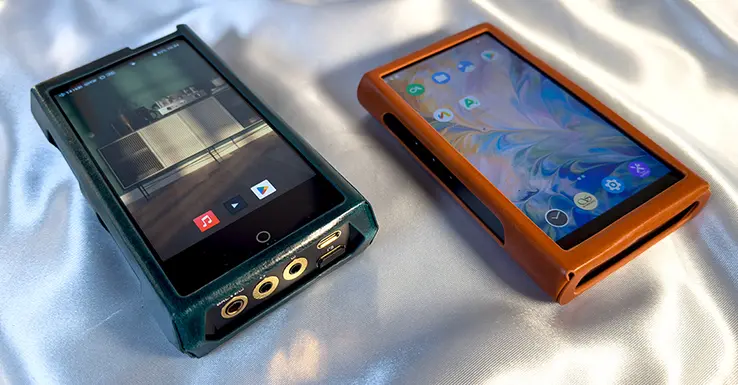
Tech Specs
First the boring stuff. Tech specs. Actually you know what? Let’s skip them.
Do we really care how much RAM these gadgets have or which Android version they use? I personally wouldn’t notice much difference in day-to-day use & won’t own them long enough that they cease to run the apps I need. (Apple Music & Neutron Player)
So what DOES really matter?
Weight. Ergonomics. Battery life. Sound, obviously. Not a lot else to me, except price.
Let’s go through each of those one by one and see how these DAPs stack up.
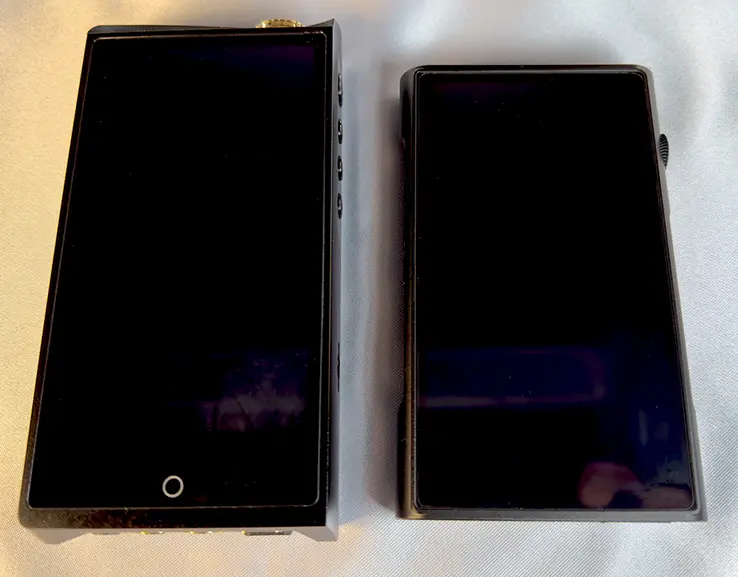
Ergonomics
The USD $3500 Cayin N8ii weighs 442g and feels like a brick.
The volume wheel lies at the top of the player, which feels less intuitive than on the side.
The power button is directly next to the FF/PLAY/REW buttons, which has caused me to push it accidentally on numerous occasions. There’s also very little space between the other three, so pressing the right one without looking is often a matter of luck.
The N8ii has a gorgeously bright & vivid screen with terrific off-angle viewing, which is nice.
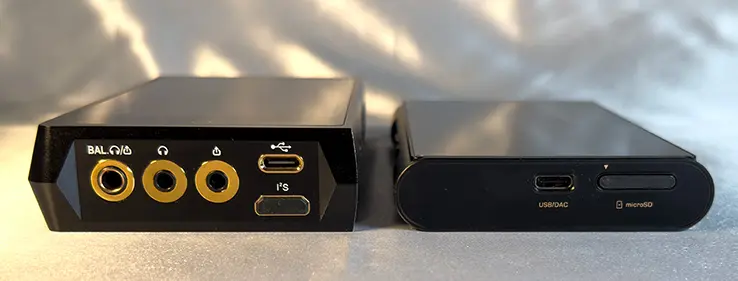
The USD $919 Shanling M6U feels virtually half as heavy as the N8ii because at 263g it is. It’s also roughly half as thick and not as tall, so reaching the volume wheel & control buttons whilst keeping it balanced in one hand is much easier.
Speaking of buttons all three FF/PLAY/REW are on the opposite side of the volume wheel which also functions as the power button – by far the best arrangement in my humble opinion. The control buttons are also wide enough & far enough apart it’s a lot harder to be confused which is which by feel.
A difference I’m not fond of is the M6U’s 4.4mm & 3.5mm output jacks being located on top of the player. This is great when the device is in your pocket, but inconvenient when you’re sitting at a desk or in bed. I much prefer the N8ii’s bottom-placed jacks, but of course it’s a matter of personal preference.
Although the M6U’s screen is the same size as the N8ii’s at 5”, colors are more washed out, contrast isn’t as high and it’s noticeably dimmer at max brightness. It’s entirely acceptable, but not spectacularly impressive like the N8ii’s.
I do notice the M6U feels slightly slower in regular use than the N8ii. Though I wouldn’t call it sluggish, it lacks the N8ii’s terrific snappiness. The N8ii’s internal modem also downloads songs via wifi noticeably faster. Both players feature double-tap to wake, a wonderful little feature that’s easy to love.

To sum it up the N8ii feels & looks like a premium device that also happens to be heavy & cumbersome. Perhaps I need more bicep curls in the gym (would it help if I started going?) but am conscious of the N8ii’s weight whenever I pick it up so it quite never “disappears” in the experience of using it.
That’s nice if you like being reminded you’re holding something expensive others may struggle to afford, but ergonomically I much prefer the M6U which is easier to use without thinking.
Its’ volume wheel also feels more solid than the N8ii’s which is somewhat loose, whereas the M6U wheel is just large enough to turn easily without protruding excessively. If only Shanling had placed those output jacks on the bottom instead.
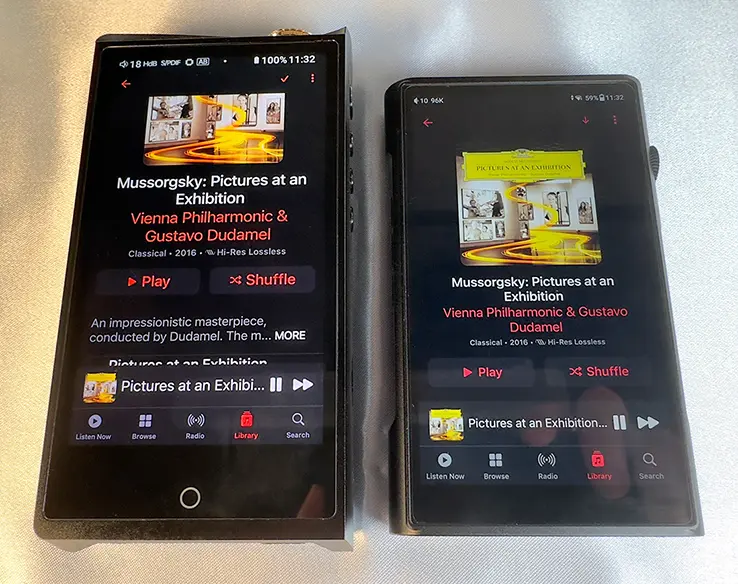
Battery Life & Heat
Put simply both players perform poorly in these two areas. I’ll discuss heat first.
In the N8ii’s case there’s a valid excuse: It contains fully-balanced Nutube output, the first DAP to do so. So naturally running in tube mode is going to result in heat levels going up, especially if you decide to charge the DAP while listening, which Cayin actually advises against. In fact some users have reported their units temporarily shutting-down in such circumstances due to the protection circuit kicking in.
In regular operation outside tube mode the N8ii gets warm, but not excessively so. Beyond what might be considered the norm for other flagship DAPs? Possibly, though if another brand can challenge Cayin in the heat-heat stakes it’s Shanling!
If anything the M6U heats up even more than the N8ii but without any tube mode excuse. Though I haven’t felt it get scorching hot to the touch it isn’t terribly far away, particularly when kept in a jacket pocket while playing for half an hour or so. Heat doesn’t particularly bother me (having lived happily with an ALO Continental Dual Mono) but others may be less tolerant of this.
Battery life is more my concern. No, I haven’t run forensic tests or performed scientific experiments to determine precisely how many hours these DAPs deliver.
Anecdotally though? Let’s just say on hi-gain via 4.4mm both Cayin & Shanling quote 9 hours for each of these players, but in my experience when you factor in a decent amount of streaming & screen-on time those numbers feel very optimistic.
I work from home and have the luxury of listening throughout the day, and neither DAP feels like it’ll last a full day without a top-up at some point, particularly if I listen in the evening after work as well.
That’s disappointing, but perhaps a sign of the times given power output numbers have shot up in recent years – indeed both players will output up to 720mW at 32 ohms. Sony’s WM1M2 may have better battery life but caps output at 250mW at 16 ohms, and I definitely prefer the option of more power on tap.
The N8ii has a few more audio settings than the M6U in the form of tube mode, A/AB and P+ modes (which I’ll talk about later) which can be switched off to conserve power, but in my experience the N8ii drains about as fast as the Shanling with all of them disabled – turned on, it will run out of juice even faster.
To make matters worse at 10000 mAh the N8ii’s battery is almost double the size of the M6U’s 5650 mAh, meaning it takes MUCH longer to charge. Both players support Quick Charge which helps, but with the much larger battery and those extra power-draining modes the N8ii definitely felt more difficult to keep topped-up enough to last a full day.
Sound Comparison
At last we come to the meat of the sandwich, how do they sound?
In short both are terrific, a testament to how much quality sound manufacturers can squeeze into one hand these days. However the differences between them are noteworthy.
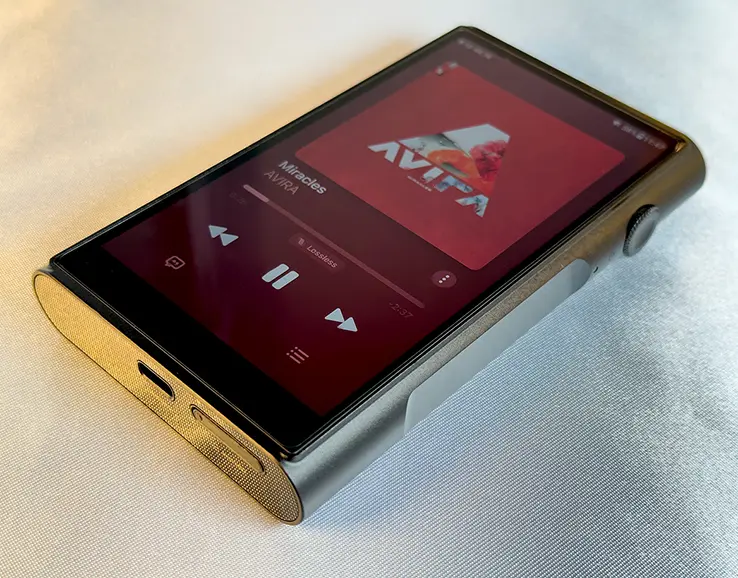
M6U Sound Performance
First a confession – as you may have already guessed I went into this review wanting to like the M6U enough that it would supplant the N8ii for my needs. So I was delighted to find there’s much to love about the Shanling’s sound.
The M6U’s resolution is top notch and it never gives the impression any detail is missing. The N8ii may have the slightest edge here but they’re very hard to separate. Perhaps this is no surprise given the M6U uses no less than four AKM AK4493SEQ DACs, which I’d have never dreamt was possible for such a petit form factor.
The Shanling DAP’s soundstage is also very broad, occasionally feeling wider than the N8ii’s, perhaps due to it being considerably flatter than the N8ii’s and thus width is more perceptible.
The M6U’s AKM DACs also render notes’ attack with slightly more bite than the N8ii, which suits electronic & classical music especially well. I find high notes in particular jump out more on the M6U, as if they’re slightly brighter without delivering any more actual information, but allowing themselves to be detached from the rest of the performance more easily.
I’d love to conclude things there (remember I admitted to M6U bias) but the larger truth is less positive.
Where the M6U lags behind the N8ii is in naturalness. Everything feels slightly more artificial and less organic. My brain needs to work that little bit harder with the M6U to sort out what I’m hearing and over time that adds fatigue.
It probably doesn’t help that the M6U leans more aggressive so I perceive being very close to the stage itself, though that does give the illusion sounds in the wings are coming from further to my left or right. The overall character of the presentation is definitely dryer than the N8ii, and dynamics are not quite as strong either. Bass on occasion leans a trifle one-note as well.
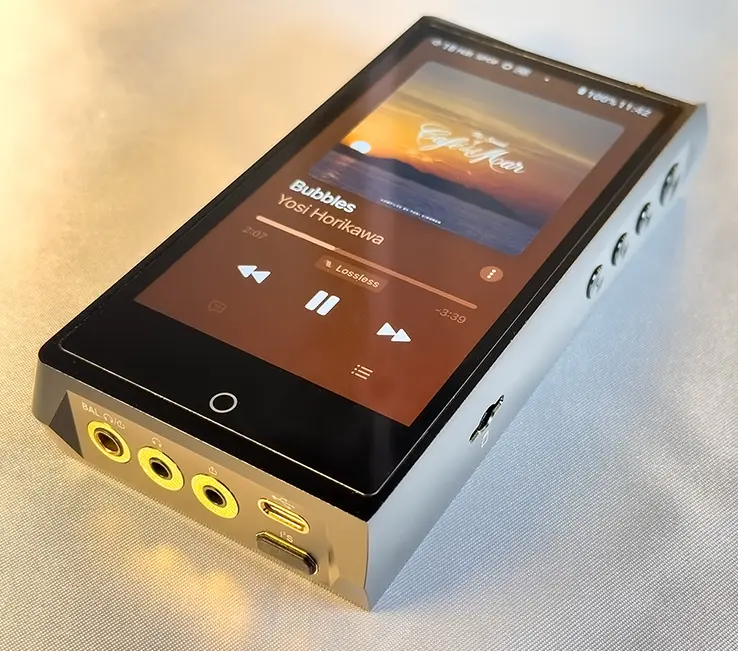
N8ii Sound Performance
Continuing with my unabashed bias, the N8ii’s dual ROHM BD34301EKV DACs have a strange tendency of making notes feel somewhat rounder and softer than I’d like, without ever giving the impression important detail is being obscured. There’s a certain diffuseness here, leading me to wonder if I simply prefer the AKM house sound instead.
After saying that, sonically the N8ii is superior to the M6U in almost every other respect and boasts greater flexibility to boot.
Let’s begin with the two greatest points of differentiation – stage and ease.
The N8ii’s soundstage is far deeper and more three-dimensional than the M6Us. Imaging is also stronger, with individual notes being spotlit in their position more starkly. This is the first change I notice when swapping between the two players.
Following closely behind is the way the N8ii renders everything with a delightfully smooth articulation that the M6U lacks. Everything feels calmer and less nervous, yet resolution may actually be slightly higher and there’s definitely less harshness.
The N8ii also has a slightly V-shaped tendency where sub bass and upper treble are tastefully accentuated. A noticeable consequence is improved bass texture over the M6U, something the Impacts in particular greatly benefit from. Indeed I’d go so far as to say I find the Impacts’ bass performance somewhat lacking on the M6U, but satisfying on the N8ii.
I typically run the N8ii with high-gain activated, in AB mode with P+ turned on, and the tubes turned off. Actually I run every DAP in the highest gain available, since doing so generally improves dynamics which are crucial to my musical enjoyment.
Of all the N8ii’s tweakable audio settings, P+ mode makes the biggest difference to my ears. It substantially boost bottom-end oomph, improves dynamics, creates the illusion of being slightly closer to the stage, and even improves midrange clarity. Perfect for creating a more exciting presentation, so I leave it permanently engaged which means the amp must stay in class AB mode since class A can only be activated with P+ off. Luckily I hear no difference going from class AB to A on this particular DAP.
Tube mode I’m more on the fence about. It creates a slightly more three-dimensional stage with a more rounded and lush sound that’s slightly more organic with perhaps better note weight, similar to what you’d expect from a real tube amp. Solid state feels more accurate with slightly more impactful bass and a flatter stage, with more perceptible upper midrange and a firmer, harder sound. I go back & forth between them depending on mood & genre, but wouldn’t purchase the N8ii solely on the back of its’ nutube capability.
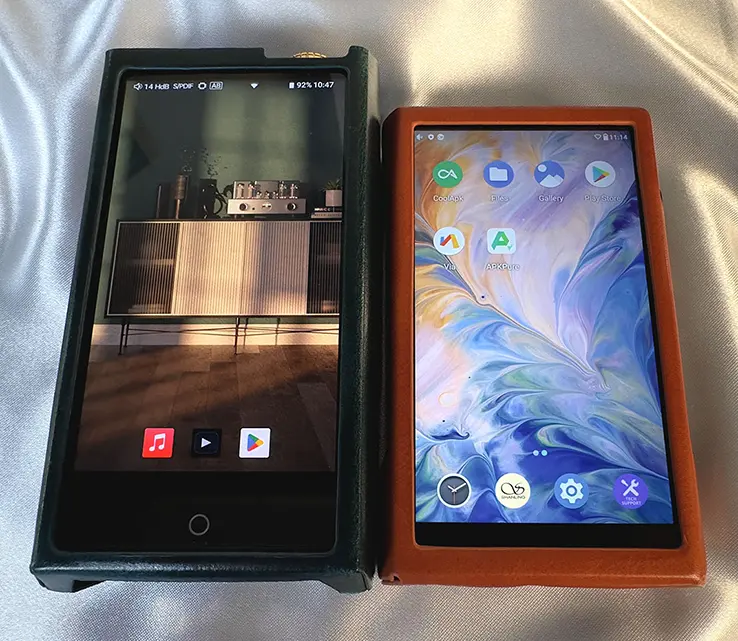
Conclusion
I’ve silently dreaded writing this section.
My goal as a reviewer should be to arrive at a definitive position, articulated with firm authority and backed by unshakeable logic.
Unfortunately, the reality is quite different.
They’re both wonderful players in their own right, and my decision to choose between them has been torturous. It’s true the N8ii outshines the M6U sonically in most areas, but I much prefer the M6U’s ergonomics and value.
In fact the more aggressive character of the AKM-fuelled M6U lies dearer to my heart, but that sound hasn’t been as flawlessly executed as the N8ii’s ROHM interpretation, no doubt due to size & cost restrictions.
With the N8ii I become enveloped in its’ effortlessness delivery, whereas the M6U leaves me musing how much I enjoy the sound but wishing for that missing touch of refinement one quickly grows accustomed to. The N8ii feels snappier scrolling through menus on its’ beautiful screen, but the M6U is more comfortably gripped & operated with one hand.
I will say this – to my ears mid-level players like the M6U & DX240 have reached a point where they deliver almost all the resolution of cost-no-object DAPs like the N8ii. The real difference comes in the effortless reproduction of that resolution, with greater absence of grit or glare and slightly improved technicalities.
On the face of it that’s a heavy financial trade-off for performance gains some might consider slight, but the funny thing about audio is even tiny changes can have a profound effect on our emotional response to what we hear.
Neither player will likely disappoint.

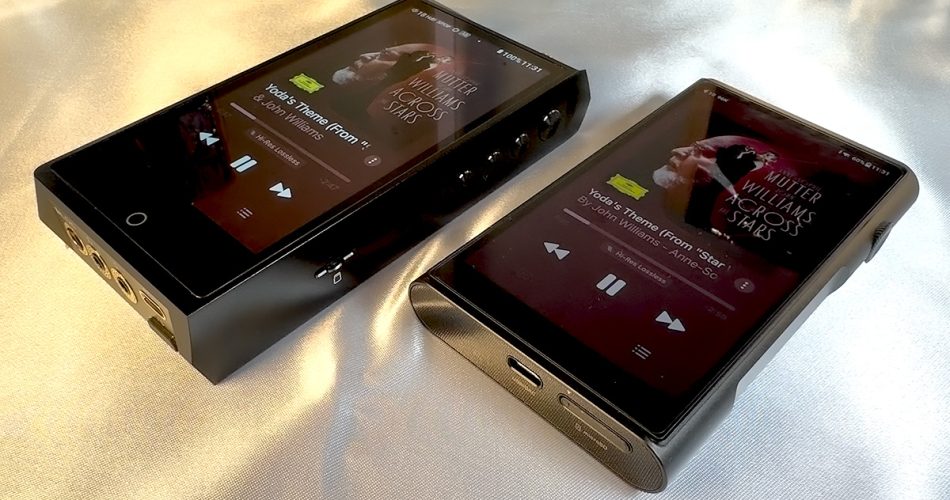
Nice review. I have owened both and you very well described the nuanced differences.
Please keep writing reviews as they are very enjoyable.
Try the new Fiio M15S or the new Hiby RS6 Pro II next !
Thanks Tom, glad you liked it!
I’m certainly very keen to try the Hiby RS6 Pro II in particular with that unique form factor and larger screen.